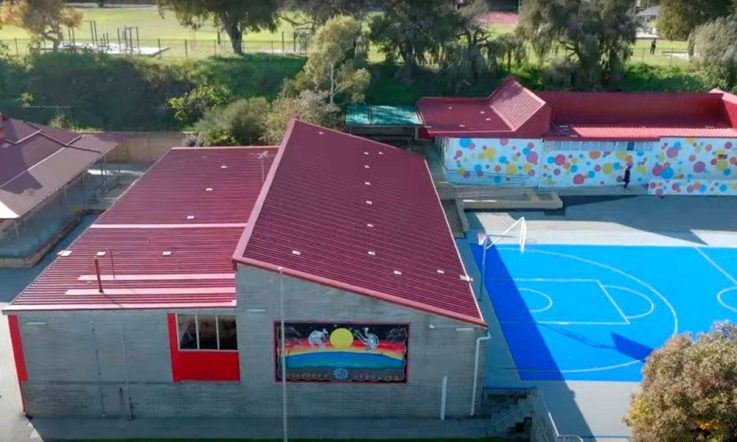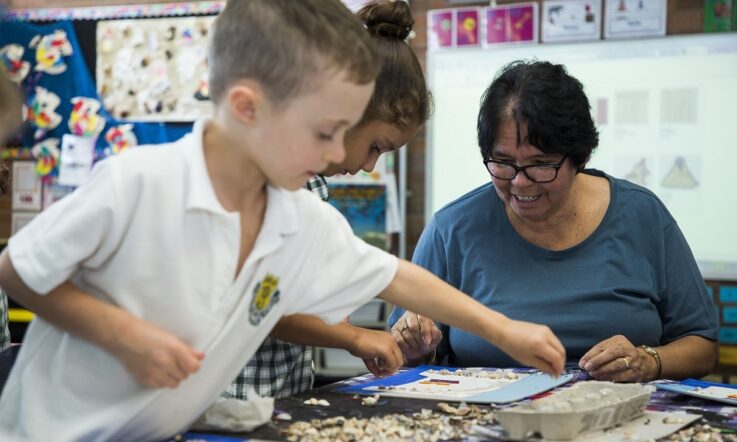How can school educators meaningfully integrate Indigenous perspectives into their classroom and teaching practice? Melissa Serrurier is an Indigenous curriculum specialist and PhD candidate at the University of Melbourne who will be sharing practical strategies and insights at a free professional development webinar next week.
Teacher caught up with her ahead of the event, and in our latest expert Q&A, Melissa discusses culturally responsive teaching, making the shift from tokenism, using authentic resources, and the ways that schools can respectfully build and sustain genuine partnerships with local communities.
Can you tell us about your work in the education sector and current research into integrating Indigenous perspectives in teacher classroom practices?
I have over a decade of experience in the education sector, beginning my career as a dedicated primary school teacher before transitioning into secondary education, where I taught in trauma-informed settings supporting some of the most vulnerable students. I then moved into higher education where I served as an Indigenous Curriculum Specialist at RMIT University, where I had the role to embed Indigenous perspectives across STEM programs and courses. Currently, I work with AFL SportsReady as the Indigenous Program Manager, where I assist in running our Indigenous programs for our Indigenous students to be provided with different pathways into education and employment. I am a passionate advocate for inclusive education that honours both Indigenous perspectives and the rights of people with disabilities. As a published author, I contribute to conversations that challenge and transform mainstream educational practices. My PhD research focuses on how pre-service teachers are equipped during their Initial Teacher Education (ITE) programs to meaningfully integrate Indigenous perspectives into their teacher and classroom practices. Driven by a deep commitment to cultural integrity, social justice and educational equity, my work is grounded in both lived experiences and academic inquiry, striving to create learning environments where all students feel seen, valued and empowered.
What do we mean by the term culturally responsive teaching?
Culturally responsive teaching refers to an educational approach that recognises, respects, and incorporates students’ cultural identities, experiences, and knowledge systems into teaching and learning. The aim is to create inclusive, equitable learning environments where all students – particularly those from historically marginalised or underrepresented backgrounds – feel valued, seen, and empowered to succeed. Culturally responsive teaching goes beyond celebrating diversity; it actively challenges deficit thinking and systemic biases by embedding students’ cultures into curriculum content, teaching strategies, and classroom interactions. This approach is especially important in the Australian context, where acknowledging and integrating Aboriginal and Torres Strait Islander perspectives helps promote truth-telling, reconciliation, and respect for the world’s oldest continuous cultures. Ultimately, culturally responsive teaching supports better educational outcomes, strengthens student engagement, and fosters a sense of belonging – laying the foundation for a more just and inclusive education system.
How can schools and teachers go from a tokenistic response to meaningful integration of Indigenous perspectives?
To move from tokenism to meaningful integration of Indigenous perspectives, schools must go beyond surface-level gestures like posters or art displays. True integration involves respectful, reciprocal relationships with local Elders and communities, where their voices actively shape curriculum and learning experiences. It also means using authentic resources – like books and oral histories – created by Indigenous people that reflect diverse perspectives. This work requires ongoing reflection, cultural competence and a genuine commitment to truth-telling and educational equity.
Can you share some examples of how teachers could begin to embed Indigenous perspectives in different subject areas?
Teachers can begin embedding Indigenous perspectives by starting with small, intentional steps across subject areas. In English, I’ve used texts by Aboriginal authors to spark discussions about identity, land and culture from an Indigenous lens. In science, I’ve explored bush medicine and traditional ecological knowledge to highlight how Aboriginal people have long practiced sustainable land care. In history, I have spoken about truth-telling history accounts of colonisation, not just the western perspective. These are just a few examples, there are many more ways to embed Indigenous perspectives. It’s also important that Indigenous students see themselves reflected in the curriculum – not as an add-on, but as central to Australia’s story. Embedding these perspectives should be ongoing, respectful and connected to community voices where possible, not just a one-off lesson.
What advice do you have for teachers out there who want to do more but are perhaps fearful of making mistakes – of offending the community or Indigenous students?
It’s completely normal to feel nervous about getting it wrong – but don’t let that fear stop you from starting. The worst mistake is doing nothing at all. Approach the work with humility, honesty, and a willingness to learn. Be transparent with students – especially Indigenous students – about your intention to teach respectfully and your openness to feedback. Build relationships with local communities, take time to listen, and always use authentic resources. Mistakes might happen, but if you're coming from a place of respect and care, they become learning moments. This work isn’t about being perfect – it’s about being committed.
How can schools respectfully build and sustain genuine partnerships with Indigenous communities?
Respectful engagement with Indigenous communities must start at the leadership level and be embraced as a whole-school commitment – not left to individual teachers. It begins with listening, not leading. Schools should take time to learn about the local Country they’re on, identify key community members or Elders, and approach relationships with humility, patience, and respect. Partnerships should be reciprocal – not just about what the school can gain, but how schools can support community aspirations and cultural integrity. This could mean creating space for community voices in planning, inviting Elders to guide curriculum development, or supporting local initiatives. True collaboration takes time, trust, and consistency. It’s not a one-off visit or a project – it’s an ongoing relationship grounded in respect, shared values, and mutual learning.
Melissa Serrurier will be exploring effective ways to integrate Indigenous perspectives, sharing practical strategies and insights, in a free webinar on Tuesday 27 May (16:30 AEST). The online event – Indigenous Studies Across the Curriculum – is hosted by Informit. Click on the link for more information and to register.
In this Q&A, Melissa Serrurier discusses moving from tokenism to meaningful integration.
As a classroom practitioner, do you use authentic resources that have been created by Indigenous people and reflect diverse perspectives?
As a school leader, how are you taking a whole-school approach to building ongoing, respectful and reciprocal relationships with local Elders and communities?



